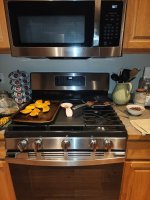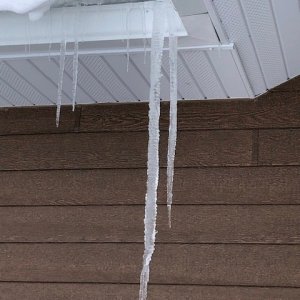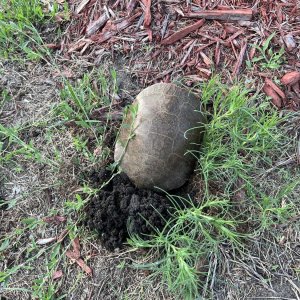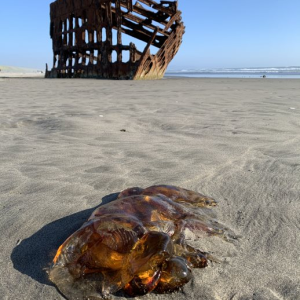You are using an out of date browser. It may not display this or other websites correctly.
You should upgrade or use an alternative browser.
You should upgrade or use an alternative browser.
NFR This stove rocks!
- Thread starter flybill
- Start date
Non-fishing related
If only it could keep time with the microwave.Makes cooking so much easier and fun!
Not to poo poo on your parade: But generally not advised to have a microwave and that type of "vent" above a gas stove. That type of fan doesn't vent to the outside: It just circulates through a filter.Makes cooking so much easier and fun! View attachment 92105
For gas ranges, you really, really need an actual hood to go over it. Otherwise, that's a ticking "silent killer" carbon monoxide time bomb waiting to happen (or rather, IS happening).
flybill
Life of the Party
Yeah, I've considered it, but I only live in the house.. not own it.. and I'll risk it.. blow up Hamas style.. not!!Not to poo poo on your parade: But generally not advised to have a microwave and that type of "vent" above a gas stove. That type of fan doesn't vent to the outside: It just circulates through a filter.
For gas ranges, you really, really need an actual hood to go over it. Otherwise, that's a ticking "silent killer" carbon monoxide time bomb waiting to happen (or rather, IS happening).
It's not about "kaboom," it's about the gases you're breathing. There's a minimum requirement of fan capacity vs room size when using gas ranges for that reason. Right now, you're at or around 0% of said ventilation capacity.Yeah, I've considered it, but I only live in the house.. not own it.. and I'll risk it.. blow up Hamas style.. not!!
If it were me, I wouldn't touch that stove.
A copy/pasta for you:
Gas stoves must be properly vented for your health and safety since they produce harmful PM 2.5 particles. These tiny particles can travel deep into the respiratory tract and lungs. They are especially harmful to people with asthma or other similar pre-existing conditions. Common symptoms include coughing, sneezing, irritation of the eyes, nose, or throat.
Gas stoves also produce nitrogen oxide, nitrogen dioxide, formaldehyde, and carbon monoxide. Heavy exposure to these pollutants can be deadly. Carbon monoxide is particularly dangerous because it is both invisible and odorless. Five to about 15 ppm of carbon monoxide is an acceptable range of CO levels for a ventilated gas range. Poorly ventilated stoves may range from 30 to 50 ppm or higher.
Between 15 to 30 ppm, people may experience some short-term symptoms such as headaches, shortness of breath, or nausea. Those with asthma may experience more severe symptoms. Thirty or more and into the 100s of ppm, severe nausea, disorientation, and migraines can occur. Prolonged exposure to high CO levels can even lead to comas or death.
A kitchen exhaust fan will vent the harmful contaminants out of your home so you can enjoy fresh indoor air quality.
Gas stoves must be properly vented for your health and safety since they produce harmful PM 2.5 particles. These tiny particles can travel deep into the respiratory tract and lungs. They are especially harmful to people with asthma or other similar pre-existing conditions. Common symptoms include coughing, sneezing, irritation of the eyes, nose, or throat.
Gas stoves also produce nitrogen oxide, nitrogen dioxide, formaldehyde, and carbon monoxide. Heavy exposure to these pollutants can be deadly. Carbon monoxide is particularly dangerous because it is both invisible and odorless. Five to about 15 ppm of carbon monoxide is an acceptable range of CO levels for a ventilated gas range. Poorly ventilated stoves may range from 30 to 50 ppm or higher.
Between 15 to 30 ppm, people may experience some short-term symptoms such as headaches, shortness of breath, or nausea. Those with asthma may experience more severe symptoms. Thirty or more and into the 100s of ppm, severe nausea, disorientation, and migraines can occur. Prolonged exposure to high CO levels can even lead to comas or death.
A kitchen exhaust fan will vent the harmful contaminants out of your home so you can enjoy fresh indoor air quality.
flybill
Life of the Party
It has a very good ventilation fan. It's completely safe and was installed by a professional and licensed installer.It's not about "kaboom," it's about the gases you're breathing. There's a minimum requirement of fan capacity vs room size when using gas ranges for that reason. Right now, you're at or around 0% of said ventilation capacity.
If it were me, I wouldn't touch that stove.
I agree it should have a hood, but is safe.. I'll suggest it to the home owner and continue to use it. She's cheap and probably won't bother with a hood. The stove iess than year old btw.. so things may have changed.
Thanks for pointing it out though!
Cheers!
If it doesn't vent to the outside, it isn't doing anything no matter how good it is. The one that's there under the microwave doesn't vent to outside.It has a very good ventilation fan.
flybill
Life of the Party
I get it.. I'll call Frederick's appliances and see what they say.. I haven't had any problems yet.. and like I said this stove is less than a year old.(I installed a gas range in my house about 7yrs ago and had to install the hood myself, so went through all this personally... thus having opinions on it)
Brian in OR.
Steelhead
Hard to beat gas stoves for cooking......
Last edited:
I'm honestly shocked that a professional would install a gas range without a range hood. Maybe just wanted the job/sale (though they probably could've sold them on a hood, too).I get it.. I'll call Frederick's appliances and see what they say.. I haven't had any problems yet.. and like I said this stove is less than a year old.
flybill
Life of the Party
I believe that there is, now that I think about it.. either outside venting or into the house next door.. LOL!Many over-the-range style microwaves do vent to the outside. I have one in my house and had one in the condo. Bill, check the cupboard above the microwave to see if there is ventilation pipe extending through the ceiling or out the wall.
Yeah apparently they do exist, but it seems like they max out at like 300 or so CFM from what I see... which is like half of what you'd need. And half the CFM doesn't mean "it's only sucking half of what you need to vent," the amount of CFM you calculate is needed to get an actual flow of air going up it. If you don't have enough power, very little of what you need to actually vent will go up it. You'll just be venting the steam you can see while everything else leaks out.Many over-the-range style microwaves do vent to the outside. I have one in my house and had one in the condo. Bill, check the cupboard above the microwave to see if there is ventilation pipe extending through the ceiling or out the wall.
(I'd honestly never seen one that vents to the outside. Every house I've ever lived in has only had the circulation filter type).
flybill
Life of the Party
Vented outside! I learn something new everyday!Yeah apparently they do exist, but it seems like they max out at like 300 or so CFM from what I see... which is like half of what you'd need. And half the CFM doesn't mean "it's only sucking half of what you need to vent," the amount of CFM you calculate is needed to get an actual flow of air going up it. If you don't have enough power, very little of what you need to actually vent will go up it. You'll just be venting the steam you can see while everything else leaks out.
(I'd honestly never seen one that vents to the outside. Every house I've ever lived in has only had the circulation filter type).
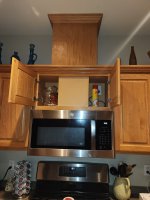
flybill
Life of the Party
And have gas production issues daily!Gas stove issues?
He smokes cigars all the time.
I replaced our microwave last year and was surprised to see that it had two options for hookup. Either recirculating through a filter or connecting to a vent pipe. If that had been present on the earlier version, I didn't notice it, and have always opted to vent to the outside. I could check the cfm, but I notice that this new one has a more powerful fan than the old one did. Also, our stove(s) are electric, not gas, so my concerns don't include CO.Yeah apparently they do exist, but it seems like they max out at like 300 or so CFM from what I see... which is like half of what you'd need. And half the CFM doesn't mean "it's only sucking half of what you need to vent," the amount of CFM you calculate is needed to get an actual flow of air going up it. If you don't have enough power, very little of what you need to actually vent will go up it. You'll just be venting the steam you can see while everything else leaks out.
(I'd honestly never seen one that vents to the outside. Every house I've ever lived in has only had the circulation filter type).
I'm learning here, too! An unlikely educational thread.Vented outside! I learn something new everyday!View attachment 92111

